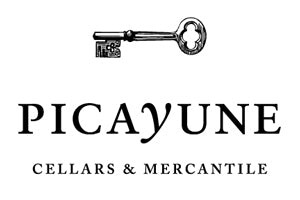The Squash Katsina is often a favorite of collectors. He appears mostly on First Mesa as a runner; however, carvers from all the mesas do make him. The body proportions are executed to perfection. The calves, biceps and chest musculature are very natural for the body of a runner. Katsinas that are runners are generally the younger men who can sustain the exertion of a race. . He also is a Chief Katsina for the Pumpkin Clan.
This Kachina is carved by Hopi artist Eloy Wytewa. Eloy is from Bacavi, Arizona. Bacavi is a village in Third Mesa on the Hopi Reservation in the northern region of Arizona. The carving appears to be from a single piece of cottonwood root with the exception of the pedestal, which may have been added, and the two squash blossoms in his hands.
- Signed by artist on base
- Condition: Good; but missing the two squash blossoms from his hands
- Size: 9" with base
- Vintage: SOLD-AS-IS
Central to Hopi religion, Kachinas are supernatural beings believed to live on the San Francisco Peaks near Flagstaff, Arizona. Hopi men embody the Kachina spirits during ceremonies that take place between Winter Solstice and mid-July. The Hopis believe these spirits enable them to live in harmony with nature, ensuring rain, crops, fertility, and good hunting. The Hopi men embody the spirits of these kachinas by wearing masks and dancing in the plazas of the villages.
Traditional, or Old-Style, Kachina Dolls were simple carvings, replicas of the dancers that would be visiting during the upcoming ceremony. These would be given to the children so that they may learn about their people's traditions.
The art of carving kachina dolls has evolved from the old-style blocklike figures into today's highly detailed, all-wood dolls with realistic form and action. Over time, Kachina Dolls became more and more sophisticated and included bases for the dolls to stand on and showing the Kachina in “action”- such as dancing or hunting.
All Kachina Dolls are carved out of the root of the Cottonwood tree. The Cottonwood tree’s vigorous roots travel far and deep in search of water. There is spiritual importance in this fact, as the Hopis are dry farmers in an arid part of Arizona and the search for water is of critical importance to their culture.
The Squash Katsina is often a favorite of collectors. He appears mostly on First Mesa as a runner; however, carvers from all the mesas do make him. The body proportions are executed to perfection. The calves, biceps and chest musculature are very natural for the body of a runner. Katsinas that are runners are generally the younger men who can sustain the exertion of a race. . He also is a Chief Katsina for the Pumpkin Clan.
This Kachina is carved by Hopi artist Eloy Wytewa. Eloy is from Bacavi, Arizona. Bacavi is a village in Third Mesa on the Hopi Reservation in the northern region of Arizona. The carving appears to be from a single piece of cottonwood root with the exception of the pedestal, which may have been added, and the two squash blossoms in his hands.
- Signed by artist on base
- Condition: Good; but missing the two squash blossoms from his hands
- Size: 9" with base
- Vintage: SOLD-AS-IS





